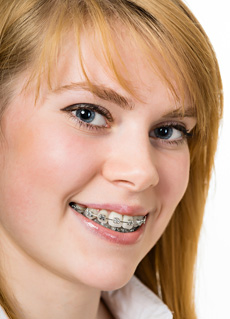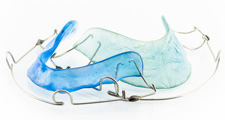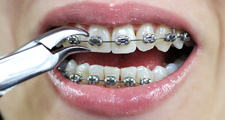
Orthodontic Appliances
Orthodontic appliances currently used by orthodontists to correct malocclusion (bad bite) and abnormally positioned teeth include Damon brackets, ceramic tooth-like brackets, clear braces, and metal braces.
An innovation in the practice of orthodondia, the Damon bracket invented by Damon Dwight utilizes a sliding-door mechanism termed "self-ligation" which allows the wire to slide back and forth inside the bracket. The Damon bracket causes less friction, hence is more comfortable for the orthodontics patient and reduces the orthodontic treatment duration and intensity.
For patients, such as adult orthodontics patients, who are concerned about their appearance, ceramic braces are a viable option as they are more transparent, so less distinguishable than conventional metal braces. Ceramic braces, furthermore, do not discolor over time.
Except for the arch wire, clear braces are virtually undetectable as their brackets consist of monocrystalline sapphire. Invisalign orthodondics make use of transparent technology as well for patients who are concerned about the appearance of braces.
Typically the least costly form of orthodontic appliance, traditional stainless metal braces are used to realign teeth and correct malocclusion (bad bite). Metal braces, clear braces or ceramic brackets can be used by in conjunction with such removable orthodontic appliances as plates, headgear, elastic bands, and other expansion and functional appliances.
An orthodontist will choose the proper dental appliance for each individual patient. As orthodontists boast two to three academic years of specified training in orthodontics and dentofacial orthodpedics, they are more than qualified to select the correct orthodontics treatment plan.


